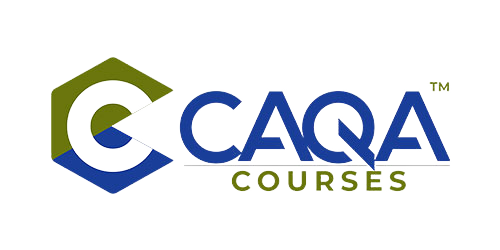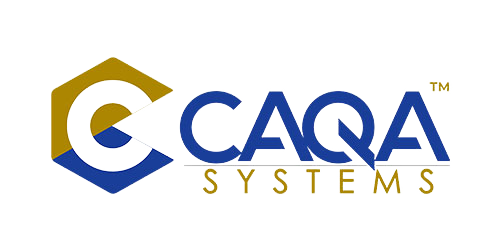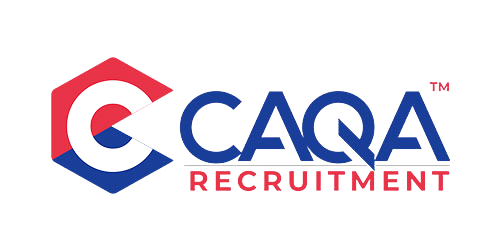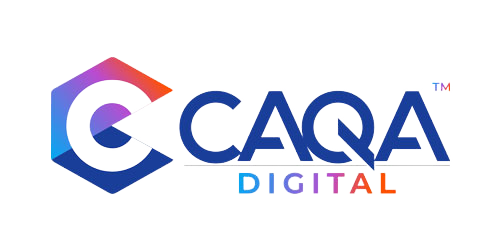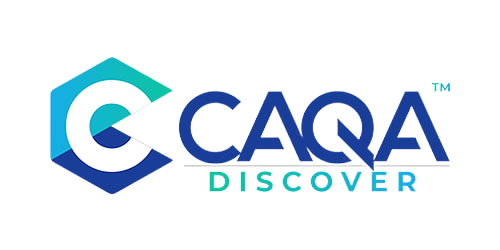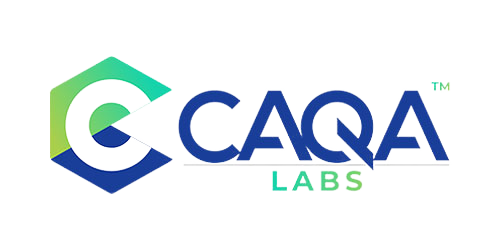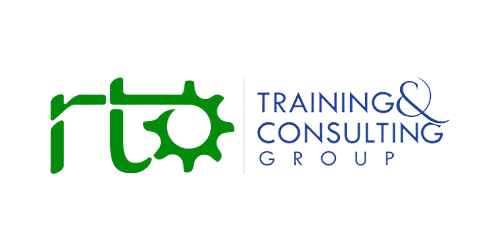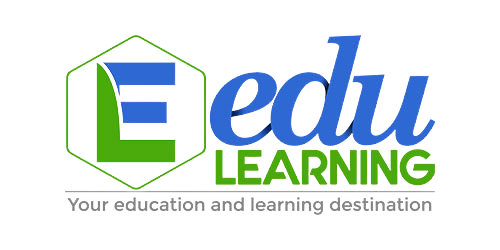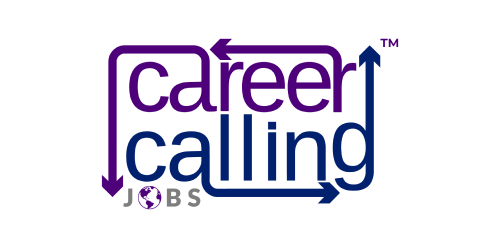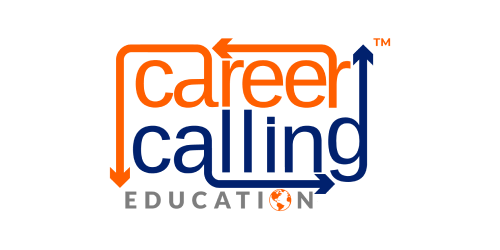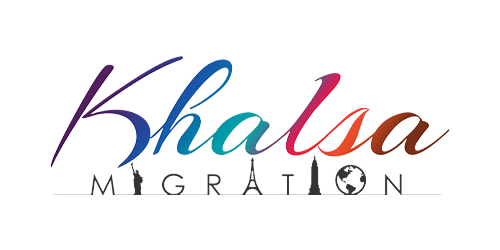In a busy commercial kitchen at a regional culinary school, students prepare a three-course meal for paying customers under the watchful eye of industry-experienced instructors. This isn't a classroom exercise with simulated consequences; it's a real service with real customers, real time pressures, and real standards to meet.
"There's simply no comparison between reading about kitchen procedures in a textbook and actually having to deliver quality dishes to paying customers on time," explains a student in her final term of a Certificate III in Commercial Cookery. "When a real person is waiting for their meal, everything you've learned suddenly has immediate purpose."
This scene represents the beating heart of vocational education's most powerful teaching approach: work-integrated learning (WIL). While traditional classroom instruction remains important, it's the fusion of theoretical knowledge with authentic workplace experience that truly transforms VET students into job-ready professionals.
The numbers tell a compelling story about this transformation. According to the National Centre for Vocational Education Research (NCVER), 90% of VET graduates with significant work-integrated learning experience secured jobs within six months of completion, compared to just 70% for those with minimal workplace exposure. This 20 percentage point advantage represents thousands of individual career opportunities directly linked to the practical capabilities developed through authentic workplace learning.
"Work-integrated learning isn't just a nice addition to VET, it's absolutely central to what makes vocational education effective," notes a workforce development specialist with extensive experience across multiple industries. "The integration of classroom instruction with workplace practice creates learning experiences that simply can't be replicated through theory alone."
Beyond the Classroom: Why Workplace Learning Matters
Unlike university programs where work experience is often an optional enhancement, work-integrated learning is fundamentally embedded in VET's design and delivery across Australia.
In 2023, over 250,000 Australians were engaged in apprenticeships or traineeships, while countless others completed mandatory placements as integral components of their vocational qualifications. This approach reflects a fundamental understanding that vocational competence requires not just knowledge but practical capability developed through authentic application.
The impact extends far beyond individual skill development. Work-integrated learning creates sustainable connections between training and employment, enhances educational outcomes, addresses systemic workforce challenges, and provides multiple stakeholders with significant benefits.
"What makes vocational education distinctive is its intimate connection to workplace practice," explains an education researcher specialising in work-based learning. "The most effective VET programs don't just teach about work, they engage students in actual work, creating authentic contexts where theory becomes concrete and skills become embodied through practice."
This approach is particularly vital given Australia's current workforce challenges, with 56.8% of employers engaged with the VET system in 2023 and many sectors facing critical skills shortages. Work-integrated learning creates direct pathways from education to employment, helping address these shortages while providing students with clear routes to meaningful careers.
Multiple Stakeholders, Multiple Benefits
The power of work-integrated learning lies in its ability to create significant value for all key stakeholders in the vocational education ecosystem.
For Students: Building Real-World Capability and Career Advantage
For VET students, work-integrated learning transforms abstract knowledge into practical capability through authentic application and guided practice. Rather than merely learning about procedures, materials, or techniques, students actively perform relevant tasks in contexts that mirror actual work environments.
"When I started my aged care placement, everything changed," shares a student completing a Certificate III in Individual Support. "Suddenly, all the communication techniques we'd discussed in class had real meaning when I was helping actual residents with their daily needs. You can't learn that kind of contextual understanding from a textbook."
This experiential learning develops procedural knowledge and muscle memory alongside conceptual understanding, creating more complete and durable skill development than classroom instruction alone can provide. Students learn not just how to perform tasks but when and why particular approaches are appropriate, developing the professional judgment that distinguishes truly workplace-ready graduates.
Beyond technical skills, workplace learning builds the critical soft skills consistently identified in employer surveys: communication with colleagues and clients, teamwork under pressure, problem-solving with limited resources, and adaptability to unexpected challenges. These transferable capabilities enhance employability across different contexts and career stages.
For students from disadvantaged backgrounds, international students, and career changers, work-integrated learning plays a particularly crucial role in employment access. These groups often lack the family connections or previous work history that traditionally facilitate entry into skilled occupations. Structured workplace learning creates alternative pathways, allowing them to demonstrate capabilities directly to employers rather than relying solely on credentials or background.
"For many of our students who are first in their family to pursue post-secondary education or who come from culturally and linguistically diverse backgrounds, workplace placements provide crucial opportunities to build professional networks and demonstrate their capabilities directly to potential employers," notes a student support coordinator at a major provider. "This practical demonstration of skills often overcomes barriers that might otherwise limit their employment opportunities."
For Employers: Developing Talent and Reducing Hiring Risk
Employers gain substantial benefits from participation in work-integrated learning, explaining why many invest significant resources despite the coordination requirements involved. Most directly, WIL creates talent pipelines that address persistent skills shortages and recruitment challenges.
By engaging with students during their training, employers can identify promising candidates, assess their capabilities in actual work situations, and build relationships that facilitate recruitment upon graduation. The extended observation of potential employees performing relevant tasks provides much richer information than interviews or credentials alone can offer.
A 2023 Australian Industry Group survey quantified this preference, finding that 65% of employers prioritised VET graduates with substantial work-integrated learning experience in their hiring decisions, citing lower onboarding time and faster productivity as key factors. New employees with relevant workplace exposure typically reach full productivity 30-50% faster than those with purely classroom-based training, representing weeks or months of additional contribution within the critical first year of employment.
"When we hire graduates who've completed placements with us or similar organisations, they hit the ground running," explains a human resources manager from a large healthcare provider. "They understand our systems, they're familiar with the workplace culture, and they've already developed the practical skills needed for the role. The difference in productivity compared to candidates without this experience is substantial."
Beyond recruitment advantages, employer participation in work-integrated learning creates opportunities to influence training content and approaches, ensuring education aligns with actual workplace requirements. By providing feedback on student performance and identifying skill gaps, employers can help shape curriculum development, assessment approaches, and teaching priorities.
For the VET System: Enhancing Outcomes and Maintaining Relevance
For the VET system itself, work-integrated learning significantly enhances educational outcomes through multiple mechanisms. Student engagement and motivation increase substantially when classroom learning connects visibly to workplace application, creating a clear purpose and relevance.
This enhanced engagement translates directly to improved completion rates. NCVER data shows programs with strong work-integrated learning components achieve 60% completion compared to 45% for those without, representing thousands of additional qualified workers entering the labour market rather than leaving with partial training.
Learning effectiveness improves through the contextual application that workplace settings provide. Abstract concepts become concrete when applied in authentic situations; theoretical knowledge gains meaning through practical problem-solving; and learning retention increases when concepts connect to memorable workplace experiences.
Assessment quality and validity also benefit from workplace integration. Rather than relying solely on simulated tasks or theoretical examinations, work-integrated learning enables authentic assessment of student capabilities in genuine work contexts. This approach provides more accurate measurement of job-readiness and practical competence while identifying skill gaps that might remain hidden in classroom-only assessment.
"Authentic assessment in actual workplace settings tells us far more about a student's readiness for employment than any classroom-based test ever could," emphasises an assessment specialist with experience across multiple vocational fields. "When students have to apply their skills with real clients, real equipment, and real workplace pressures, we get a true picture of their capabilities and areas needing further development."
Perhaps most importantly, work-integrated learning ensures VET remains relevant and responsive to evolving industry needs. By maintaining continuous connections between education and employment through placements, projects, and partnerships, training providers receive ongoing feedback about changing technologies, emerging skill requirements, and evolving workplace practices.
Multiple Models for Different Contexts
Work-integrated learning takes various forms across Australia's VET landscape, each offering distinctive advantages suited to different industry contexts and learning objectives.
Apprenticeships and Traineeships: The Gold Standard
Apprenticeships and traineeships represent perhaps the most comprehensive work-integrated learning model, combining paid employment with structured training over extended periods (typically 2-4 years). Students spend the majority of their time in workplace settings performing productive work under supervision, with periodic release for complementary theoretical training.
In 2021–22, more than 88,800 people completed an apprenticeship or traineeship in Australia,48% in trade occupations (42,800 people) and 52% in non-trade occupations (46,100 people). This reflects the model's expansion beyond traditional trades into diverse fields including healthcare, business services, and information technology.
The apprenticeship approach offers several distinctive advantages. Extended workplace immersion provides comprehensive exposure to the full range of tasks, situations, and responsibilities within an occupation. The employment relationship creates genuine accountability and professional expectations, with apprentices experiencing authentic workplace dynamics, pressures, and standards.
"The power of apprenticeships comes from their authentic integration of working and learning over an extended period," explains a training coordinator who oversees apprenticeship programs across multiple trades. "Apprentices don't just visit workplaces, they become genuine members of the workforce, taking on increasing responsibility while receiving systematic instruction and support."
Structured Placements: Concentrated Workplace Experience
Structured industry placements embed students in workplace settings for defined periods (typically from several weeks to several months) as components of primarily institution-based programs. These placements involve specific learning objectives, supervised practice of relevant skills, and formal assessment of workplace performance related to qualification requirements.
This model offers concentrated workplace exposure without requiring long-term employment arrangements, making it suitable for areas where full apprenticeships may be impractical or where shorter, more focused practical components complement substantial theoretical foundations.
"Our nursing students complete over 400 hours of clinical placement across different healthcare settings," describes a health training coordinator. "These placements progressively increase in complexity, beginning with basic patient interaction and care procedures, then advancing to more complex assessment and intervention techniques as students develop their capabilities. This graduated approach builds confidence while ensuring patient safety."
Effective placements require carefully designed learning progressions that match student capability with appropriate responsibilities. Early placements might emphasise observation and basic tasks, while advanced placements involve greater independence and more complex responsibilities. This progressive approach builds capability while managing risk appropriately, particularly important in fields like healthcare where client wellbeing depends on competent practice.
Simulated Environments: Controlled Authenticity
Simulated work environments recreate industry conditions within educational settings, allowing practice of workplace tasks and procedures in controlled situations before application in actual employment contexts. These environments range from training restaurants serving real customers to mock childcare centres with supervised child interaction, from simulated construction sites to replicated healthcare wards with advanced mannequins.
This approach offers valuable advantages in specific contexts. It provides a safe practice space for high-risk procedures or low-frequency scenarios that placement providers might reasonably restrict. Simulation creates opportunities for deliberate practice with immediate feedback, allowing students to repeat procedures until mastery rather than being limited by workplace production pressures.
"Our dental assistant students practice procedures on sophisticated mannequins before working with actual patients," notes a dental training coordinator. "This allows them to make mistakes and receive detailed feedback without risk to patient safety. By the time they enter clinical placements, they've already mastered basic techniques and can focus on adapting these skills to real patient situations."
Effective simulations balance authenticity with educational intentionality, realistic enough to develop transferable skills while structured to emphasise learning over production. The most sophisticated examples incorporate actual client interaction while maintaining appropriate supervision and feedback mechanisms.
Industry Projects: Authentic Problems with Educational Support
Industry projects involve students addressing actual workplace challenges defined by employer partners, typically through team-based activities combining research, analysis, and solution development. These projects might include developing marketing plans for small businesses, creating software applications for community organisations, designing environmental management approaches, or conducting product testing for manufacturers.
This approach proves particularly valuable for developing both technical capabilities and professional skills simultaneously. Project work requires students to apply technical knowledge to ambiguous problems with real constraints, developing problem-solving abilities alongside specific vocational skills.
"Our IT students complete industry projects for local businesses and non-profits as part of their final semester," explains a digital technology instructor. "These aren't hypothetical exercises, they're solving real problems for real organisations. One team recently developed a complete inventory management system for a community food bank, learning not just technical skills but also client communication, requirement gathering, and project management."
Industry projects offer particular advantages for fields where full workplace integration may be limited by regulatory requirements, liability concerns, or access restrictions. They create authentic application opportunities while maintaining educational support structures, allowing skill development that might otherwise be restricted to post-graduation employment.
Implementation Challenges and Success Factors
Despite its clear benefits, implementing effective work-integrated learning involves addressing several significant challenges. Providers and policy makers who understand these challenges can develop strategies to overcome them, maximising the value of workplace learning for all stakeholders.
Quality and Consistency Across Placements
One persistent challenge involves ensuring consistent quality across diverse workplace experiences. Not all workplaces provide equally rich learning environments, and not all workplace supervisors possess the same capability to support student development effectively.
"The quality of learning can vary dramatically between placement sites, even within the same industry," notes a placement coordinator with experience across multiple vocational fields. "Some workplaces provide comprehensive exposure to different tasks and procedures with excellent supervision and feedback, while others might use students primarily for routine work with minimal developmental support."
Successful providers address this challenge through several key strategies:
Careful workplace selection and preparation, including site visits, supervisor briefings, and clear communication about learning expectations and student capabilities.
Structured learning plans that specify the experiences, tasks, and feedback students should receive, providing a framework for both workplace supervisors and students to follow.
Regular site visits and check-ins by teaching staff who can monitor student experiences, address emerging issues, and ensure learning objectives are being met.
Supervisor development programs that build the teaching and mentoring capabilities of workplace staff responsible for student learning.
Balancing Learning and Productivity
Another significant challenge involves balancing authentic productivity requirements with appropriate learning support. Employers naturally focus on operational outcomes, while educational priorities emphasise comprehensive skill development, creating potential tensions in learning design and implementation.
"Workplaces are primarily production environments, not educational institutions," explains an industry engagement specialist who works with employer partners. "Their primary focus is delivering products or services efficiently, not developing student capabilities. This creates natural tensions between learning needs and workplace priorities that must be carefully managed."
Effective approaches to this challenge include:
Clear agreements that explicitly address the balance between productive work and learning activities, establishing realistic expectations for both students and workplace supervisors.
Progressive responsibility models that gradually increase productive expectations as student capabilities develop, rather than imposing full productivity requirements immediately.
Integrated assessment approaches that align with actual workplace tasks, reducing the additional burden that separate assessment activities might create.
Recognition of supervisor contribution through formal acknowledgment, professional development opportunities, or financial incentives that value the educational role that workplace staff play.
Access and Equity Considerations
Work-integrated learning can inadvertently create equity challenges if not carefully designed and supported. Students in regional or remote areas may have limited access to relevant placement opportunities. Those with caring responsibilities or who need to maintain paid employment may struggle with placement scheduling. Students with disabilities may require workplace accommodations or additional support to participate effectively.
Addressing these equity considerations requires thoughtful approaches, including:
Flexible scheduling options that accommodate diverse student circumstances, including part-time, evening, or weekend placement opportunities where appropriate.
Travel and accommodation support for students needing to relocate temporarily for placement opportunities, particularly in regional and remote areas.
Specialised support services for students with disabilities, including workplace assessment, adjustment negotiation, and ongoing support during placements.
Virtual and technology-enabled options that create alternative workplace learning opportunities when physical placement isn't possible or practical.
Capacity and Resource Constraints
The provision of quality work-integrated learning requires significant resources from both educational institutions and industry partners. Finding sufficient placement opportunities, coordinating complex scheduling, providing adequate supervision, and maintaining effective communication all demand substantial investment, creating implementation challenges, particularly during periods of economic constraint.
Successful systems address these resource challenges through approaches including:
Shared coordination resources across multiple providers, creating economies of scale in placement management and employer engagement.
Digital platforms that streamline placement matching, documentation, assessment, and communication between stakeholders.
Group placement models where multiple students attend the same workplace with shared supervision, reducing the per-student resource requirement.
Recognition frameworks that acknowledge and incentivise employer contribution through various mechanisms, including tax incentives, preferential access to graduates, or subsidies for supervisor time.
Policy Implications and Future Directions
The demonstrated value of work-integrated learning has significant implications for VET policy and system design. Several key directions emerge from both Australian experience and international best practice.
Embedding WIL in Qualification Design
Work-integrated learning should be systematically embedded in qualification design and training package development, not treated as an optional addition or implementation detail. This embedding includes specific requirements for workplace hours, detailed guidelines for appropriate activities, and explicit assessment criteria for workplace performance.
"When work-integrated learning is built into qualification requirements rather than left to provider discretion, we see more consistent implementation and better graduate outcomes," notes a qualification design specialist. "This doesn't mean rigid uniformity; different industries need different approaches, but it does require explicit expectations that ensure all students receive meaningful workplace experience."
Investment in Coordination and Support Infrastructure
Effective work-integrated learning requires substantial coordination infrastructure, systems for identifying placement opportunities, matching students with appropriate workplaces, supporting workplace supervisors, monitoring quality, and managing administrative requirements. This infrastructure demands dedicated funding and professional staffing rather than being treated as an additional responsibility for teaching staff.
Successful models include specialised placement coordination units within providers, industry-led coordination bodies that facilitate placements across multiple providers, and digital platforms that connect students, employers, and educational institutions efficiently. These approaches reduce the administrative burden on individual teachers while improving placement quality and consistency.
Supervisor Development and Recognition
Workplace supervisors play a crucial role in work-integrated learning success, but often receive limited preparation or support for this educational responsibility. Systematic approaches to supervisor development and recognition are essential for quality improvement and sustainability.
Effective initiatives include formal recognition of supervisor contribution through credentials or professional development points, structured training programs focused on educational support skills, communities of practice connecting supervisors across workplaces, and financial recognition for the time invested in student mentoring and assessment.
Flexibility and Innovation
While maintaining core quality standards, work-integrated learning approaches should embrace flexibility and innovation to address emerging industry needs, changing student demographics, and evolving workplace structures. This adaptability is particularly important as work patterns change through technological advancement, remote work options, and evolving organisational structures.
Promising innovations include virtual and augmented reality applications that create immersive learning experiences, micro-placement models offering shorter but more frequent workplace exposures, project-based approaches addressing authentic workplace challenges without requiring continuous presence, and digital collaboration tools that facilitate remote workplace learning opportunities.
Conclusion: The Transformative Power of Learning by Doing
Work-integrated learning represents far more than a pedagogical technique or curriculum component, it's a transformative approach that fundamentally reshapes the vocational education experience. By bridging the persistent gap between training and employment, it creates powerful learning opportunities that develop not just technical skills but the full range of capabilities needed for workplace success.
For students, this integration provides the authentic practice, contextual understanding, and professional socialisation that transforms knowledge into capability and potential into performance. For employers, it creates talent pipelines, reduces onboarding costs, and ensures graduates possess the practical skills needed for immediate productivity. For the VET system, it enhances educational outcomes, improves completion rates, and maintains ongoing alignment with evolving industry requirements.
As Australia navigates complex workforce challenges, including skill shortages, technological transformation, and changing work patterns, the importance of effective work-integrated learning continues to grow. By investing in quality implementation, addressing equity considerations, and embracing innovative approaches, the VET sector can maximise the transformative potential of this powerful educational model.
Back in that busy training restaurant, students are learning more than recipes and techniques; they're developing the practical capabilities, professional judgment, and workplace confidence that will serve them throughout their careers. By learning through doing, they're experiencing firsthand the transformative power that has made vocational education such a vital pathway to meaningful employment and economic opportunity for millions of Australians.











